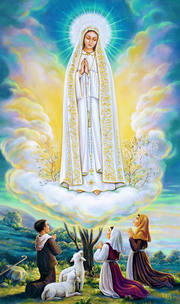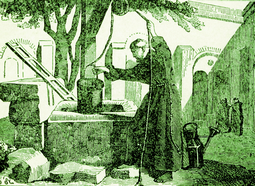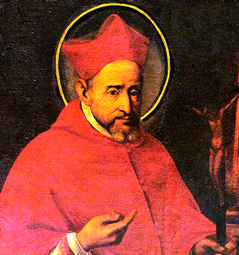May 13th - Our Lady of Fatima and St. John the Silent
May 14, 2019 2:00:18 GMT
Post by Elizabeth on May 14, 2019 2:00:18 GMT

Our Lady of Fatima
(1917)
Much has been written concerning the six famous apparitions of the Blessed Virgin Mary in a little town in Portugal between May 13 and October 13, 1917. Later it would be said, and rightly so, that everything She predicted there to the three little shepherds has been fulfilled point by point. The story is too long to tell in detail in a few words, and indeed it is not over yet.
Our Lady of Fatima was sent to warn the 20th century that humanity had not followed the path that had been indicated to it by her Son; humanity had not developed as God intended, and the time of the last and worst enemy was fast approaching. She said that if Her requests for prayer and penance were not heard, Communism would spread its errors all over the earth. She appealed to the Apostles of the Latter Times to come forth, those who lived in humility, poverty and contempt for the world, repeating what She had already said at La Salette, France, in greater detail in 1846.
During the final apparition on October 13th, She appeared as Our Lady of Mount Carmel, accompanied by Saint Joseph and the divine Child. Through Lucy of Fatima, Mary had promised a miracle to convince doubters of the reality of Her presence and the Will of God She had conveyed by Her words, and She fulfilled that promise. On October 13, 1917, the great Miracle of the Sun occurred, witnessed by all who were present at Fatima, an international crowd of 70,000 spectators. The sun whirled about and seemed to be plunging down as it sent off multicolored rays; many cried out that it was the end of the world.
A large shrine was built at Fatima, and in the 1940's more than a thousand miracles had already been duly confirmed there. The famous Secret of Fatima, part of which was disclosed by the Vatican to certain heads of State in 1963, still remains largely a secret for most of the people who have been waiting for it since 1960, the year that the Virgin said it was to be made public.

Saint John the Silent
Bishop, Monk of Saint Sabas
(454-558)
Saint John was born of a noble Christian family of Nicopolis in Armenia, in the year 454, inheriting from the virtue of his parents a more illustrious nobility than that of their station. After their death, the young man built at Nicopolis a church in honor of the Blessed Virgin, as well as a monastery, which he himself entered when only eighteen years of age, with ten fervent companions, all desiring to make the salvation and perfect sanctification of their souls their unique and earnest pursuit.
Not only to shun the danger of sinning by the tongue, but also out of sincere humility and contempt for himself and love for interior recollection and prayer, Saint John very seldom spoke. When he was obliged to do so, it was always in very few words, and with discretion. He was greatly afflicted when, at the age of only twenty-eight, he was obliged by the Archbishop of Sebaste to quit his retreat in 482, for the Archbishop desired to ordain him bishop of Colonian in Armenia.
In this new dignity Saint John always preserved the same spirit, and, insofar as was compatible with the duties of his charge, continued his monastic austerities and exercises. But finding himself persecuted in his diocese and fearing to bring down on it still greater troubles, he resolved to leave and go to Jerusalem, to live there unknown. While he was watching one night in prayer, however, he saw before him a bright cross formed in the air, and heard a voice which said to him, If you desire to be saved, follow this light. It seemed to move before him and finally point to the monastery of Saint Sabas, not far away, which at that time contained one hundred and fifty fervent monks. Saint John was then thirty-eight years old.
After living there unknown for some years, fetching water, carrying stones, and doing other menial work, Saint Sabas, judging his monk worthy to be promoted to the priesthood, presented him to the Patriarch Elias of Jerusalem. Saint John took the patriarch aside, and, having obtained from him a promise of secrecy, said, Father, I am already a priest and have also been consecrated bishop; but on account of the multitude of my sins I have fled, and have come to this desert to await the visit of the Lord. The patriarch was startled, but promised not to reveal the matter. God, however, through the ministry of an Angel, revealed to Saint Sabas also while he was at prayer, that his monk was a bishop. Then Saint John, finding himself discovered, wished to leave the monastery; Saint Sabas prevailed on him to remain, by a promise never to divulge the secret.
In the year 503, Saint John withdrew into a neighboring wilderness, but in 510 returned to the monastery, where he confined himself for another forty years to his cell. By his example and counsels, he guided many fervent souls to God and continued to emulate, as much as this mortal state would allow, the glorious employment of the heavenly spirits in their uninterrupted exercise of love and praise. He passed to their blessed company soon after the year 558, having lived seventy-six years in the desert, interrupted only by the nine years of his episcopal dignity.

